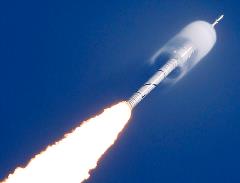Launch Vehicle Coupled Loads Analysis: Theory and Approaches

Instructed by Dr. Sam Yunis, recently retired Senior NASA Engineer
- Taught exclusively to NASA employees, now available as a public course for the first time
- All students will receive an AIAA Certificate of Completion at the end of the course
OVERVIEW
- Understanding modes and reduced order modeling as needed for CLA
- Understanding how to build high-quality component models, including Craig-Bampton models, damping, and data recovery
- Understanding the building block of CLA including numerical integration, time domain methods, and frequency domain methods
- Understanding how to define and use preliminary loads
- Understanding the theory and implementation of CLA for all key events: Ground, Liftoff, Ascent (see outline for details)
- Incorporating systems engineering into CLA
- Getting ready for the future of CLA
- Detailed outline below
AUDIENCE: This course is essential for all early to mid-career engineers and graduate students seeking a deeper understanding of CLA. The course is useful for all senior CLA analysts who want awareness of some different techniques or a refresher on existing ones. The course may also be useful for those groups providing models for CLA, to create better models by understanding how the models are used.
Type of Course: Instructor-Led Short Course
Course Length: 2 days
AIAA CEU's available: Yes
This course is also available on-demand.
Course Outline
- Fundamentals of Structural Dynamics
- Modes and reduced order modeling to matrix form
- Numerical integration of diagonal and coupled systems
- Frequency domain solutions including the FFT, PSD, and SRS
- Inertia relief
- Statistics of loads
- Preliminary Loads
- Center of Gravity Load Factors
- Mass Acceleration Curve
- Vibration Spectra
- Synthetic Transients
- Tools
- Making Good Models
- Beam Representations
- Component Model Reduction
- System Model Integration
- Damping Approaches
- Data recovery: Residual Vectors and Mode Acceleration
- Section Loads
- Model Correlation
- Uncertainty Factors
- CLA: Ground and Prelaunch
- Ground Winds
- Rollout
- Transportation and Handling
- CLA: Liftoff
- Forcing Functions
- Multibody Integration and Pad Release
- Monte Carlo
- CLA: Ascent
- Aerodynamic Static Elastic (STEL)
- Aerodynamic Gust
- Buffet
- Maneuvering Loads
- Loads Combination
- Day of Launch (DOL) Considerations
- CLA: Other Flight Events
- System ID
- Engine Oscillations and Pogo
- Start-ups and Shutdowns
- Separations or Staging
- Reentry and Landing
- Systems Engineering, Tools, and the Future

Dr. Isam (Sam) Yunis has more than 30 years of experience in aerospace engineering, predominately related to NASA programs/projects. His primary expertise is in dynamic loads for launch vehicles and spacecraft. This expertise includes analysis and testing specifically related to coupled loads analysis (CLA), vibration, vibroacoustics, shock, and crew loads. He has led the loads and dynamics analysis and testing for two major NASA Programs from inception to steady state, the Launch Services Program (LSP) and the Commercial Crew Program (CCP).
Through many technical and leadership roles, Sam has reviewed and performed analysis on over 50 flown spacecraft including Cassini, Mars Missions, Pluto New Horizons, ISS, Orion MPCV, Crew Dragon, and Starliner. Over the past 30 years, he has provided expertise to support almost every U.S. launch vehicle including Titan, Atlas, Delta, Falcon, Taurus, Pegasus, Ares, SLS, Launcher-1, Terran, and Stratolaunch.
AIAA Training Links
For information, group discounts,
and private course pricing, contact:
Lisa Le, Education Specialist (lisal@aiaa.org)
